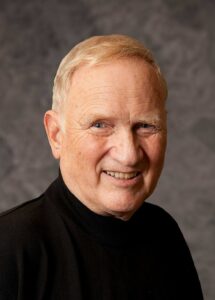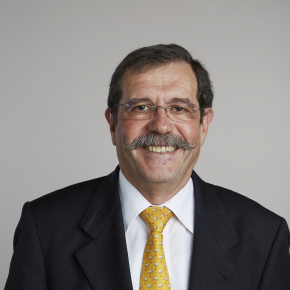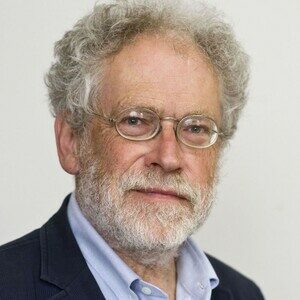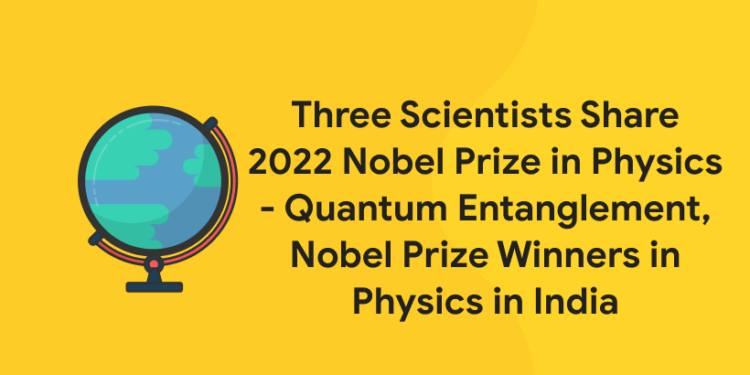Table of Contents
2022 Nobel Prize in Physics: Are you eagerly waiting to know the result of the 2022 Nobel Prize? This year, the 2022 Nobel Prize in Physics has been awarded to three scientists in recognition of their experimental discoveries that formed the foundation for quantum computing and quantum information science. Together with John Clauser, Alain Aspect, and Anton Zeilinger received the honor. The Royal Swedish Academy of Sciences announced the winners on October 4, 2022.
Their efforts investigated the fundamentals of quantum mechanics, the paradoxical laws that control activity in the subatomic universe. A phenomenon that Albert Einstein derided as “spooky action at a distance” was proven to exist in research carried out over the past 50 years. Even if it was light-years distant, measuring one of a pair of particles that were far separated from the other might instantly alter the results of measuring the other particle. This unusual phenomenon is now referred to as quantum entanglement and forms the cornerstone of the developing area of quantum information.
What is Quantum Entanglement in Simple Terms?
Quantum Entanglement Definition; “Quantum Entanglement is a phenomenon whereby a pair of particles are generated in such a way that the individual quantum states of each are indefinite until measured, and the act of measuring one determines the result of measuring the other, even when at a distance from each other. In the 1960s, an Irishman named John Bell found it possible to figure out whether this long-mysterious phenomenon truly existed.his theory is also known as ‘Bell inequality. The Bell theorem states that quantum entanglement is true if the Bell inequality is violated. As per the latest report find out by the news platforms, according to the academy, the 2022 Nobel Prize in Physics has been awarded “for experiments with entangled photons, establishing the violation of Bell inequalities, and pioneering quantum information science.” It further stated that significant research and development are being carried out to develop quantum computers, enhance measurements, build quantum networks, and create secure quantum encrypted communication by utilizing the unique qualities of individual particle systems. The prize money of Rs. 7.5 crore would be split between the winners.
Who is John F. Clauser – Nobel Prize Winner, Short Profile
1: Who was the first woman President of India?

John Francis Clauser was born in Pasadena, California. In 1964, he graduated from the California Institute of Technology with a bachelor of science in physics while a student there and a member of Dabney House. He received a master of arts in physics in 1966 and a Doctor of Philosophy in Physics from the same institution in 1969. He conducted the first experimental test of the CHSH- theorem Bell’s predictions in 1972 with Stuart Freedman. This was the first instance of a Bell inequality being observed to be violated in an experiment. In 1974, in association with Michael Horne, he first revealed that a conception of Bell’s Theorem supplies severe constraints for all local realistic theories of nature. That creation introduced the Clauser–Horne (CH) inequality as the first fully general experimental requirement set by local realism. Clauser was awarded the Wolf Prize in Physics in 2010 together with Alain Aspect and Anton Zeilinger. A joint Nobel Prize in Physics was also awarded to John Clauser along with Alain Aspect, and Anton Zeilinger in 2022.
Free UPSKILLING Courses!
Take your first step toward mastering in-demand skills, acing interviews, and securing top-tier jobs with Entri's free upskilling courses.
Start Learning!What did Alain Aspect discover? Make a Profile Here

Aspect is a graduate of the École Normale Supérieure de Cachan (ENS Cachan, today part of Paris-Saclay University). He earned his master’s degree from the École supérieure d’optique (later known as Institut d’Optique Graduate School) of the Université d ‘Orsay (later known as Université Paris- Sud) in 1969 after passing the physics agrégation. After that, for three years, he taught as part of his national duty in Cameroon. Following the initial experiment conducted by Stuart Freedman and John Clauser in 1972, the experimental procedures by Aspect were thought to further the argument that Bell’s inequalities are broken in their CHSH formulation, particularly by eliminating a particular locality loophole. His findings were not entirely definitive, though, as there were openings that may have accommodated other hypotheses that adhered to local realism. Aspect shifted to the research of laser cooling of neutral atoms after his work on Bell’s inequalities, and he now primarily works on experiments involving Bose-Einstein condensates.
Anton Zeilinger Short Biography













